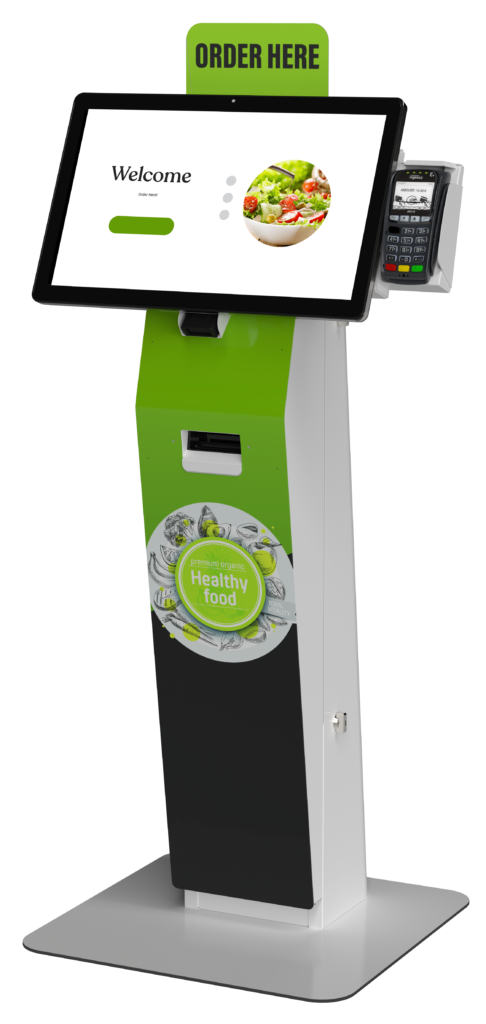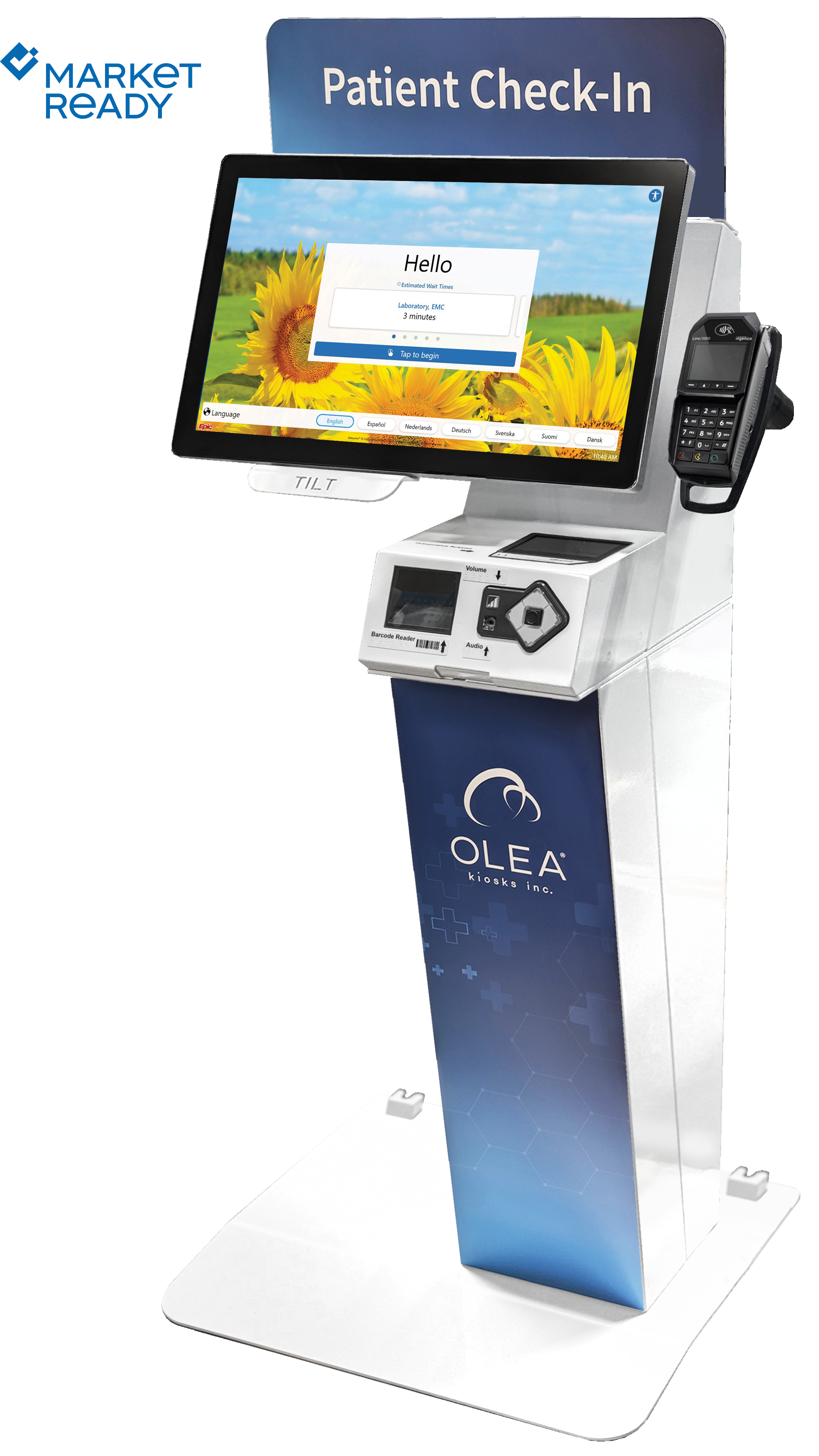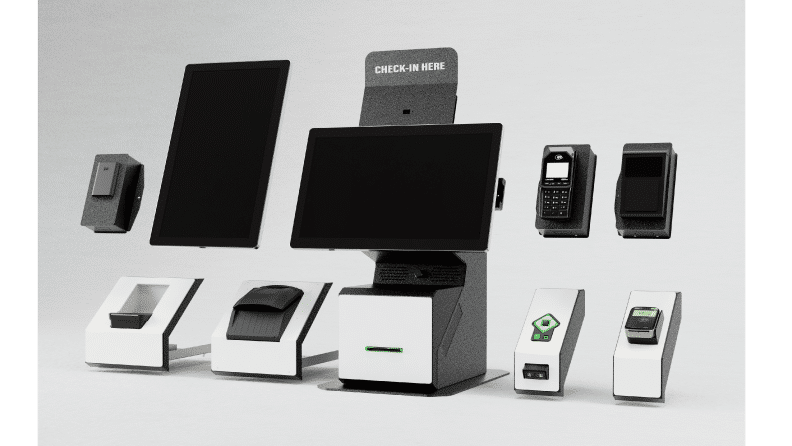When organizations invest in self-service kiosks, they expect those assets to serve their purpose reliably for years. And structurally, kiosks are designed for longevity as quality enclosures can last a decade or more. But what about the components inside? Printers, payment devices, and touchscreens often have much shorter lifecycles. That’s where kiosk lifecycle management comes in.
Rather than being surprised by end-of-life notices, smart kiosk buyers plan for change from the start. The right kiosk partner will help you design with flexibility, so your investment remains relevant long after your initial deployment.
The Challenge: Devices Evolve Faster Than Enclosures
A kiosk’s enclosure is built to last, but peripherals are on three- to five-year refresh cycles. Payment devices, in particular, are driven by evolving compliance standards like PCI and EMV. Printers, barcode scanners, and displays follow similar timelines as manufacturers refresh product families.
That means it’s not a question of if a component will need to be replaced, but when. Without kiosk lifecycle management, organizations risk expensive downtime or premature kiosk replacement.
Technology Evolution Is Inevitable
One of the realities of working with technology is that it never stands still. Hardware suppliers release new models, software standards evolve, and compliance requirements shift. What feels state-of-the-art upon deployment will almost certainly appear dated within a few years.

Think of kiosks like other long-term business assets:
• Point-of-sale systems are routinely upgraded as payment methods change.
• Commercial vehicles require regular service and parts replacement, even though the chassis may last decades.
• Network infrastructure is periodically refreshed to keep up with bandwidth and security demands.
Kiosks are no different. They should be thought of not as static machines, but as adaptable platforms. With the right design, you can continue to refresh critical components without discarding the whole unit. Businesses that plan for evolution see kiosks as living systems that are able to change with their customers and the market.
Why Kiosk Lifecycle Management Matters
Kiosk lifecycle management is about more than protecting a kiosk. It’s about protecting your ROI. Here’s why it matters:
• Longevity of investment: Ensures kiosks continue to generate value throughout their expected lifespan.
• Reduced downtime: Easy upgrades keep kiosks operational even when a device model is discontinued.
• Regulatory readiness: Staying ahead of compliance-driven upgrades avoids last-minute scrambles.
• Operational efficiency: Planned upgrades are always cheaper and smoother than reactive ones.
• Consistent customer experience: Proactive upgrades prevent situations where some kiosks have newer features while others feel outdated, protecting brand image across locations.
The Role of Peripherals in Future-Proofing
Olea published a guide on choosing the right peripherals. It highlights a critical truth: peripherals aren’t an afterthought—they define usability, reliability, and serviceability.
When peripherals are selected and integrated correctly:
• They enhance the user experience.
• They can be swapped or upgraded as needs evolve.
• They’re engineered to withstand the demands of self-service environments.
On the flip side, choosing peripherals without considering lifecycle, mounting, or serviceability can lock you into problems later. The right kiosk partner will not only help you pick peripherals that fit your business needs today but also make sure those choices won’t limit you tomorrow.
Key Strategies for Future-Proofing Your Kiosks
1. Build for Modularity
Select kiosk designs that allow for easy swap-outs of key components. Modular brackets and mounting points make it possible to upgrade a payment device or printer without redesigning the enclosure.
2. Plan for Serviceability
Make sure components are positioned for easy access during maintenance or upgrades. If your staff or service partner can’t quickly replace a printer or card reader, downtime (and cost) goes up.

3. Anticipate Compliance Cycles
Payment peripherals will inevitably change. Work with a vendor who actively tracks PCI and EMV updates and can recommend migration paths that don’t require scrapping kiosks.
4. Buy with Lifecycle in Mind
As Olea notes in its peripherals guide, it’s smart to purchase spare components during initial deployment. Having identical spares ensures consistency and helps you avoid scrambling when models go end-of-life.
5. Partner with Engineers, Not Just Builders
Engineering support is essential for integrating peripherals correctly. Just because a device fits in the enclosure doesn’t mean it will perform reliably in a high-use kiosk environment.
The Business Case for Kiosk Lifecycle Management
Organizations that treat kiosk lifecycle management as optional often end up paying more in the long run. Here’s why:
• Avoiding costly redesigns: Redesigning an entire kiosk to accommodate a new printer or card reader is far more expensive than making a modular swap.
• Fewer emergency fixes: Reactive responses like rushing to replace discontinued devices come with premiums in cost, time, and labor.
• Protecting brand reputation: Out-of-service kiosks frustrate customers and create a lack of trust or credibility around your digital strategy.
• Maximizing uptime: In industries like retail, hospitality, or healthcare, even a few hours of kiosk downtime translates directly into lost transactions or poor service experiences. For government or transportation, it may mean everything grinds to a halt.
Kiosk lifecycle management isn’t just about technology planning. It’s a business strategy that aligns kiosk design with long-term operational and financial goals.

How Olea Helps Clients Stay Future-Ready
At Olea, we’ve seen how technology evolves and how quickly clients can feel stuck if their kiosks weren’t designed with flexibility in mind. That’s why our design philosophy emphasizes serviceability, modularity, and lifecycle management.
• Consultative design process: We help clients evaluate peripherals and understand their lifecycles before deployment.
• Upgrade paths: Our engineers develop retrofit solutions to integrate new devices into existing kiosks when EOL hits.
• Quality engineering: We ensure peripherals are properly mounted, cooled, and protected, so upgrades don’t compromise reliability.
One client faced the challenge of a discontinued payment device across hundreds of kiosks. Instead of replacing the entire fleet, Olea engineered a retrofit that allowed the new certified terminal to be integrated seamlessly. The kiosks stayed in service, extending ROI and minimizing disruption.
Questions to Ask When Buying Kiosks
To make sure your investment is future-proof, ask prospective partners:
• How do you handle device EOL and upgrades?
• Are your kiosks designed for modular component swaps?
• Can you support field retrofits if compliance requires new devices?
• What’s your process for evaluating peripheral lifecycles?
• Will your design make ongoing service straightforward?
Also Read: QSR Kiosk Buyer’s Guide
Next Steps
Kiosk lifecycle management isn’t about predicting every change. It’s about designing for flexibility so you’re ready when change comes.
With the right partner, you can avoid being blindsided by device obsolescence, extend the life of your kiosks, and maximize ROI. At Olea, we design kiosks to grow with you—so your investment keeps working as hard in year seven as it did on day one. Because in kiosk deployments, the future always comes faster than you think. The key is being ready for it. We have highly experienced team members ready to discuss your kiosk project. Contact us to set up a call now.


